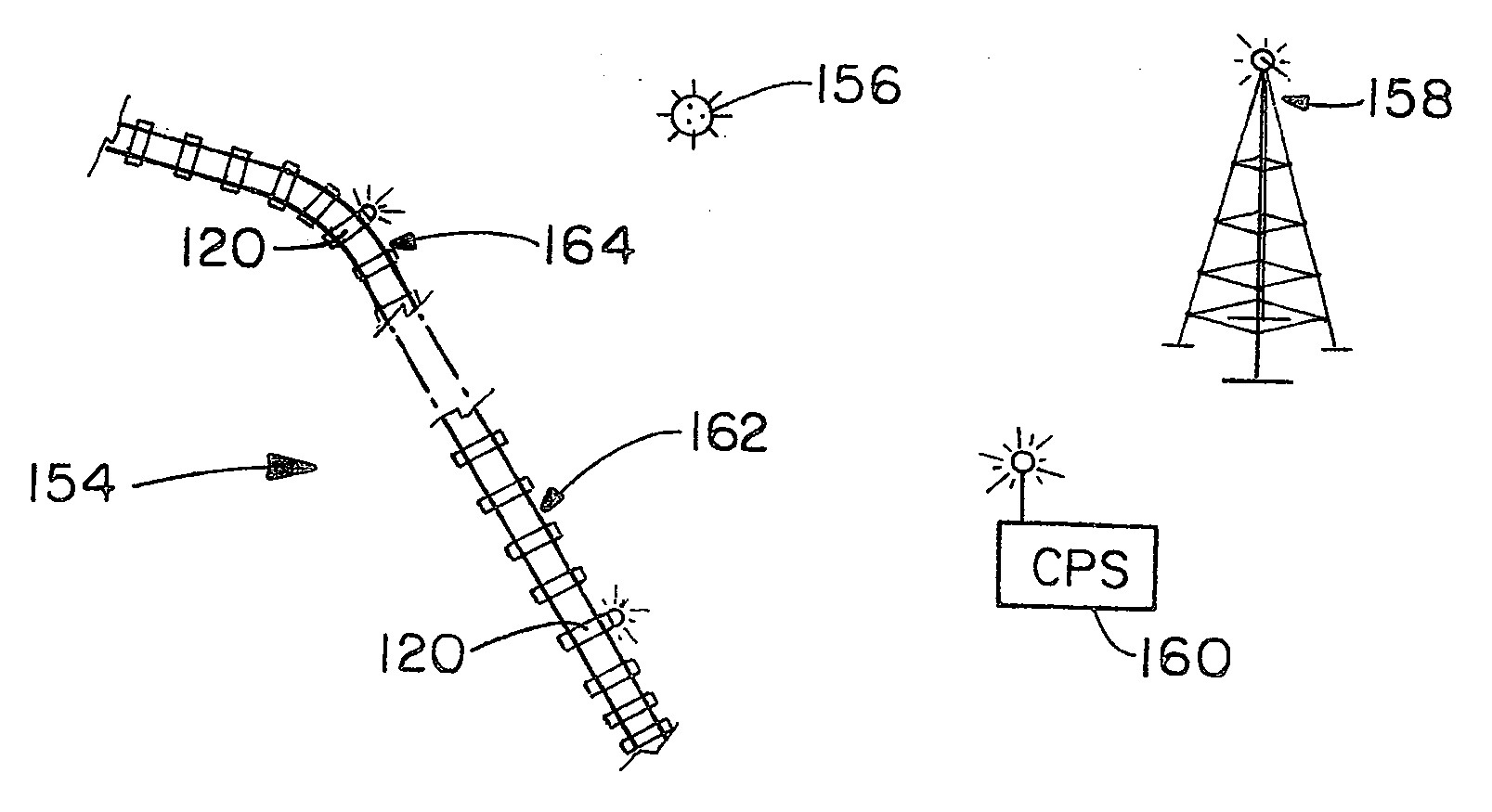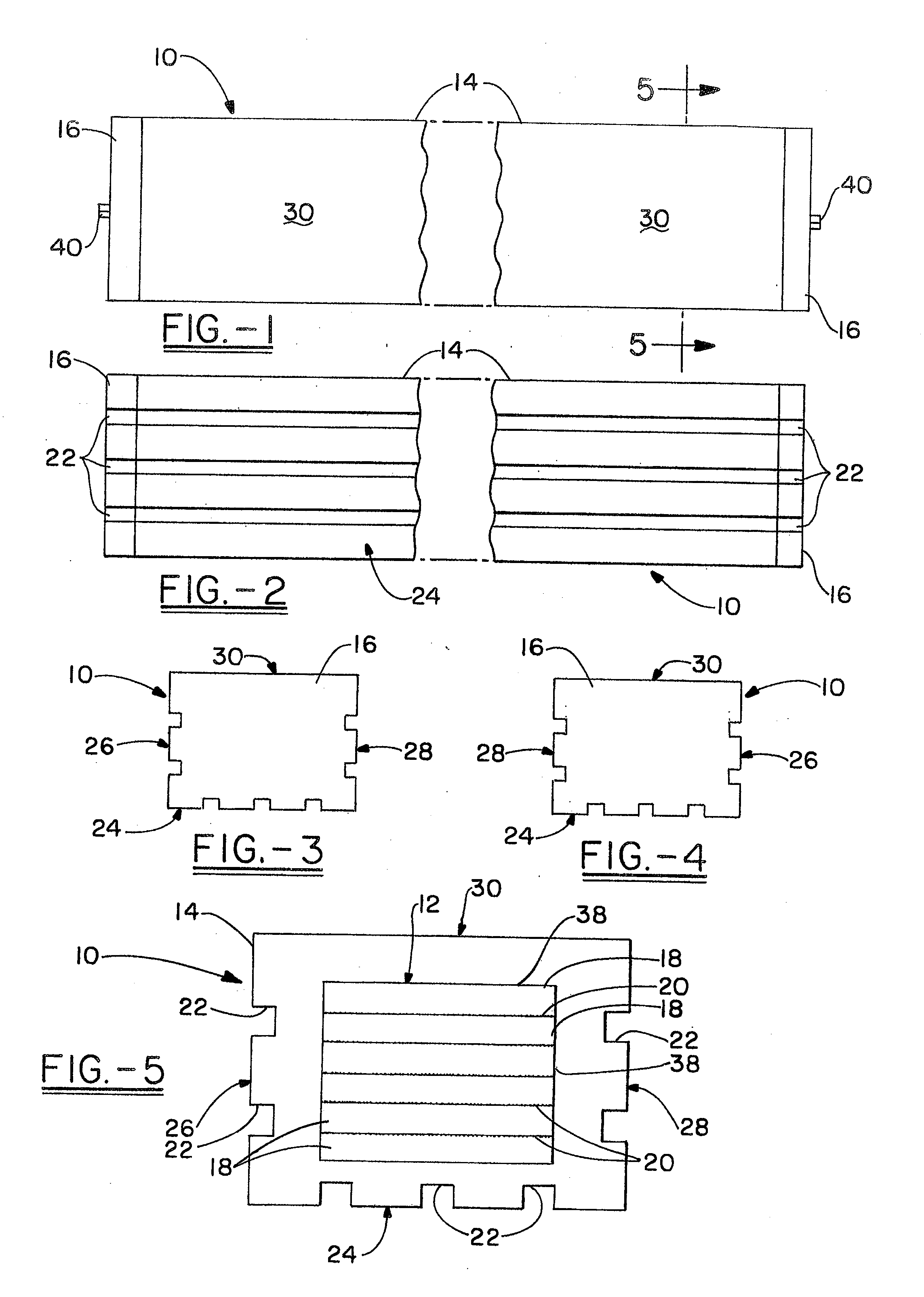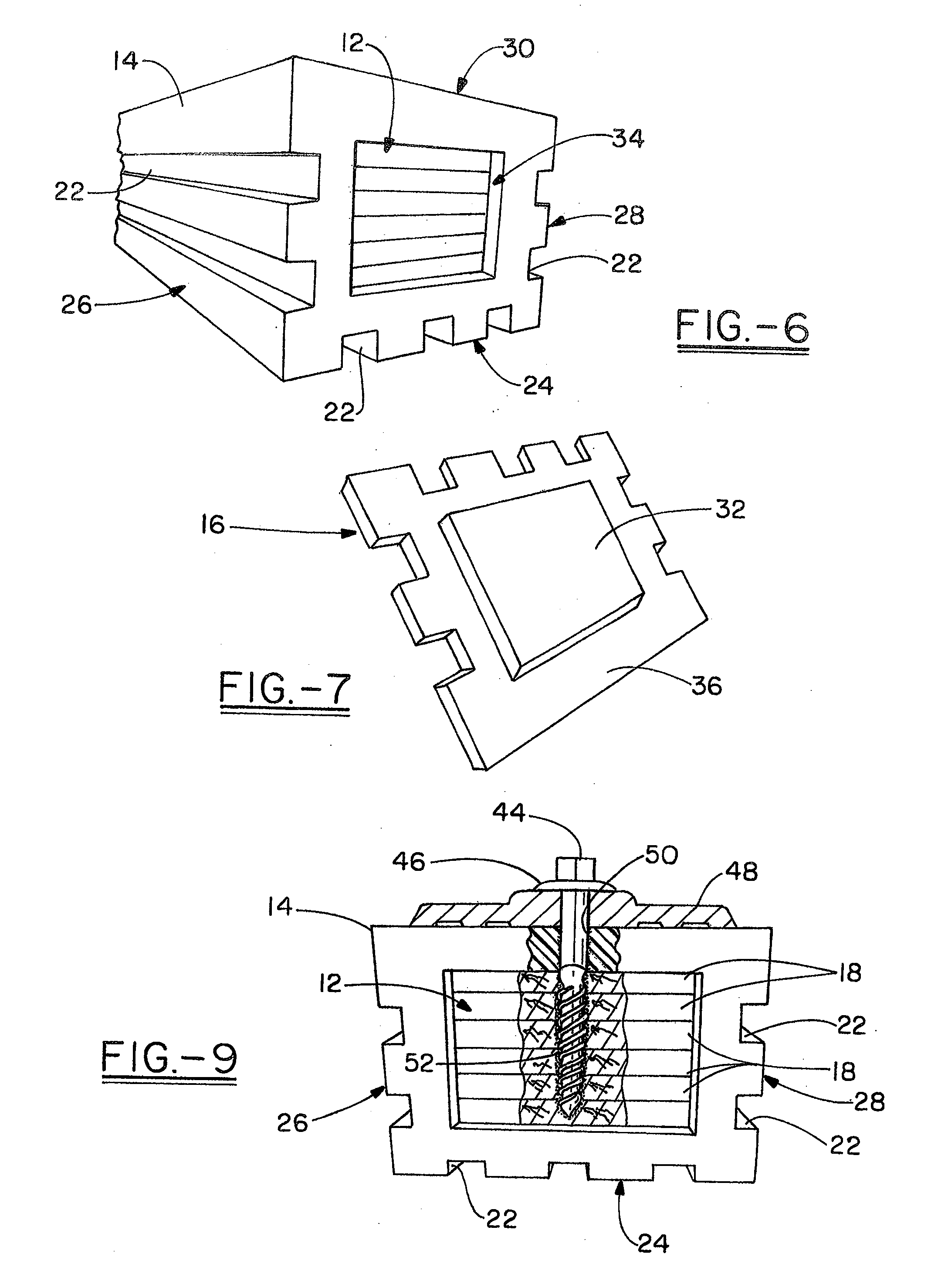Structure for railroad ties having data acquisition, processing and transmission means
- Summary
- Abstract
- Description
- Claims
- Application Information
AI Technical Summary
Benefits of technology
Problems solved by technology
Method used
Image
Examples
Embodiment Construction
[0040]Referring now to the drawings, it can be seen that in the preferred embodiment the composite structural member of the invention, generally designated by reference number 10, includes a core 12, an outer layer 14, and end caps 16. The structural member of the invention is contemplated to be particularly useful for railroad ties, but the scope of the invention is not limited to use of the structure for that purpose, and encompasses any use to which the structure may prove to be suited.
[0041]Core 12 is preferably formed with a generally rectangular cross-sectional configuration, of a plurality of slats, planks or boards 18. Slats 18 are layered or stacked, with each slat in the interior of the stack in face-to-face contact with adjacent slats, and with their side edges and ends aligned. The slats are secured together with a specially formulated adhesive material 20 applied between each slat. In the preferred method of the invention, the selected numbers of slats used to make each...
PUM
 Login to View More
Login to View More Abstract
Description
Claims
Application Information
 Login to View More
Login to View More - R&D
- Intellectual Property
- Life Sciences
- Materials
- Tech Scout
- Unparalleled Data Quality
- Higher Quality Content
- 60% Fewer Hallucinations
Browse by: Latest US Patents, China's latest patents, Technical Efficacy Thesaurus, Application Domain, Technology Topic, Popular Technical Reports.
© 2025 PatSnap. All rights reserved.Legal|Privacy policy|Modern Slavery Act Transparency Statement|Sitemap|About US| Contact US: help@patsnap.com



